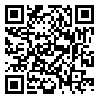September & October
Back to the articles list |
Back to browse issues page
Assistant Professor of Damghan University, Iran , zl.khosravi@du.ac.ir
Abstract: (66 Views)
One of the most significant scenes in martial Naqqali is the second wrestling match between Rostam and Sohrab, commonly known as the Sohrab-Koshi (Sohrab’s Demise) episode. Naqqals strive to deliver their finest performances in depicting this pivotal moment. The key questions are: How is meaning constructed in the performance of Naqqali? And how do Naqqals differentiate their renditions of this crucial scene from one another?
Given the importance of bodily movements in storytelling, this study examines Naqqali performance from a different perspective. Utilizing linguistic findings in gesture studies, it analyzes the interaction of ma'rekeh-ara’i (performance components) based on segments of video recordings of Sohrab-Koshi performances by Morshed Saeidi and Morshed Torabi.
An analysis of the technical and innovative aspects of the Naqqals’ gestures reveals that Torabi predominantly employs concrete depictive gestures, while Saeidi, in addition to such gestures, utilizes a wider variety of movements to engage the audience and convey abstract concepts. Each Naqqal interprets the national epic through distinct focal emphases in performance. Torabi visually depicts the hand-to-hand combat in a concrete manner and highlights the role of charkh-e boland (the destiny) in determining Sohrab’s fate. In contrast, Saeidi emphasizes Sohrab’s resistance against Rostam and ultimately represents his death metaphorically—as a tree felled by the wind.
Given the importance of bodily movements in storytelling, this study examines Naqqali performance from a different perspective. Utilizing linguistic findings in gesture studies, it analyzes the interaction of ma'rekeh-ara’i (performance components) based on segments of video recordings of Sohrab-Koshi performances by Morshed Saeidi and Morshed Torabi.
An analysis of the technical and innovative aspects of the Naqqals’ gestures reveals that Torabi predominantly employs concrete depictive gestures, while Saeidi, in addition to such gestures, utilizes a wider variety of movements to engage the audience and convey abstract concepts. Each Naqqal interprets the national epic through distinct focal emphases in performance. Torabi visually depicts the hand-to-hand combat in a concrete manner and highlights the role of charkh-e boland (the destiny) in determining Sohrab’s fate. In contrast, Saeidi emphasizes Sohrab’s resistance against Rostam and ultimately represents his death metaphorically—as a tree felled by the wind.
Send email to the article author
| Rights and permissions | |
 |
This work is licensed under a Creative Commons Attribution-NonCommercial 4.0 International License. |







